Planning a multi-sport adventure trip? It’s exciting, but let’s be honest—it can feel a bit overwhelming too. You’ll probably hike, paddle, maybe even climb, all in one go. So, how do you actually train for such a mixed bag of activities?
The real trick is to start with a good base of general fitness, then layer in sport-specific skills and endurance as you go. That way, you’re ready for whatever the trip throws at you—without burning out before you even get there.
Getting ready isn’t just about getting physically stronger. You’ll want to know where you’re starting from, fitness-wise, and build up from there. Check your abilities in each activity you’re planning for, then put together a plan that gets a bit tougher each week, mixing cardio, strength, and the skills you’ll actually need. Consistency wins over sporadic, brutal workouts every time.
Key Takeaways
- Start with general fitness, then work in training for your specific adventure activities.
- Gradually ramp up intensity, but give yourself time to rest and recover.
- Practice with the real gear you’ll use—nothing beats the confidence of knowing your equipment.
Understanding Multi Sport Adventure Travel
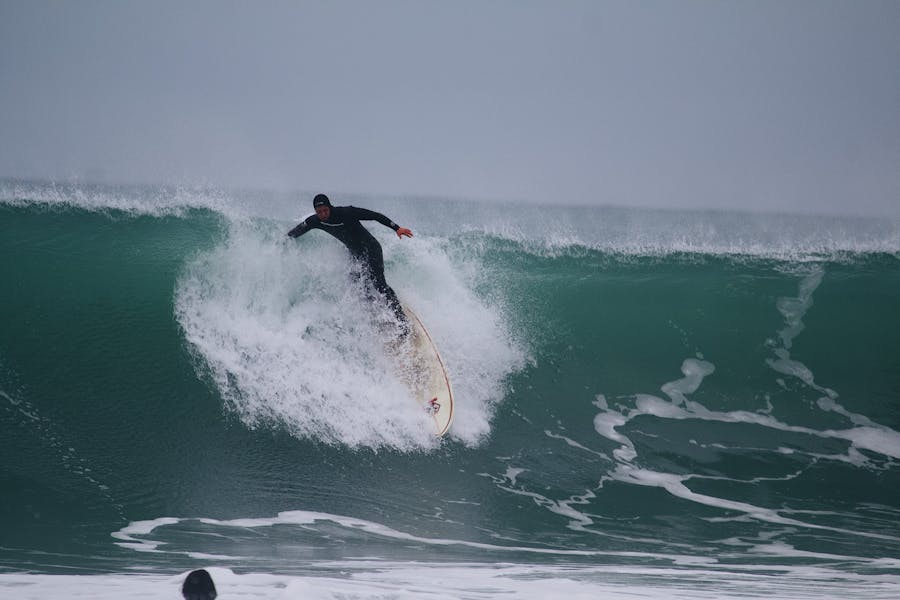
Multi-sport adventure travel mashes up several outdoor activities into one wild ride. You get to see all kinds of landscapes, and you’ll challenge your body and mind in different ways.
Types of Multi Sport Adventures
These trips come in all sorts of flavors. Here are a few common combos:
- Land-based adventures: Hiking, mountain biking, and rock climbing in places like national parks or big mountain ranges.
- Water-land combos: Kayaking, rafting, and trekking along coastlines or river valleys.
- Adventure racing: Events that mix running, biking, paddling, and navigation.
- Winter-summer hybrids: Skiing, snowshoeing, and hiking—sometimes all in the same trip, depending on the season.
Some trips are fully guided with set plans, while others are more DIY challenges. Trips can last a weekend or stretch into month-long expeditions. One thing’s for sure: you’ll never get bored doing just one thing!
Essential Skills and Disciplines
To really enjoy these adventures, you’ll need a few core skills that work across activities.
- Endurance fitness—stamina for hours of activity, day after day.
- Adaptability—you’ll need to switch gears mentally and physically.
- Basic technical skills for each activity you plan to tackle.
- Navigation—think maps or GPS, depending on where you’re going.
- Safety awareness—understanding the risks in different environments.
Gear management is a big deal too! You’ll carry equipment for all your sports, so pack smart. Learning how to transition quickly between sports can make your adventure way smoother. Don’t stress if you’re not an expert—most trips welcome a range of skill levels.
Assessing Your Current Fitness Level
Before you even book the trip, take a real look at where you’re at physically.
Time yourself in activities similar to those you’ll do on your adventure. Can you hike 5 miles with a loaded pack? Paddle for an hour? Bike 20 miles? Notice how long it takes you to recover between efforts too.
If you want a pro’s opinion, a fitness trainer can check your:
- Cardiovascular endurance
- Muscle strength and endurance
- Flexibility and mobility
- Balance and coordination
Knowing your baseline tells you how much work you’ve got ahead. Be honest with yourself—it’s way better to pick a slightly easier trip and have a blast than to bite off more than you can chew. These trips are tough, but they should still be fun.
Building a Customized Training Schedule

When you’re making your own training plan, find a balance between all your activities so you don’t get burned out or hurt. Your schedule should fit your current fitness and help you build toward your adventure goals.
Structuring Your Weekly Workout Plan
Check your starting point and look at your weekly schedule. Most folks do best with 4-6 workouts a week and at least one full rest day. Here’s a sample week:
- Monday: Strength training (about 45 minutes)
- Tuesday: Focus on your main sport (60-90 minutes)
- Wednesday: Cross-training or your secondary sport (45-60 minutes)
- Thursday: Rest or something light
- Friday: Strength and mobility (30-45 minutes)
- Saturday: Long endurance session (90+ minutes)
- Sunday: Active recovery
Don’t overcommit—it’s better to nail three workouts than plan for six and miss half. Toss in some transition workouts, like a short run after a bike ride, so your body gets used to switching activities.
Balancing Endurance and Power
You’ll need both staying power and some explosive strength. For endurance, slowly bump up your longest weekly session by 10-15% each week.
Mix in shorter, high-intensity workouts to build power. Try intervals such as:
- 30 seconds hard, 90 seconds easy—repeat 8-10 times
- 4-minute moderate-hard bursts with 2-minute rests—repeat 4-6 times
I usually stick to the 80/20 rule: about 80% of my training stays at a comfortable pace, and 20% is tough. This builds a solid aerobic base but also gives you the juice for hills or tricky sections.
Adapting Training for Different Sports
Every sport you’re planning needs its own kind of prep. Hikers and trekkers benefit from loaded carries and step-ups. Paddlers should work on rotational core strength and upper body stamina.
Cross-training is a lifesaver! Swimming is great for cardio without pounding your joints. Cycling builds leg endurance you’ll use while hiking. Strength training 2-3 times a week keeps you injury-free and boosts performance in everything.
Here’s a simple way to divvy up your time:
- Focus extra on your weakest sport.
- Practice the sport combos you’ll face on your trip.
- Simulate adventure conditions when you can—like carrying a pack or training on similar terrain.
Don’t forget—being technically skilled can save you more energy than just being fit!
Developing Cardiovascular Endurance
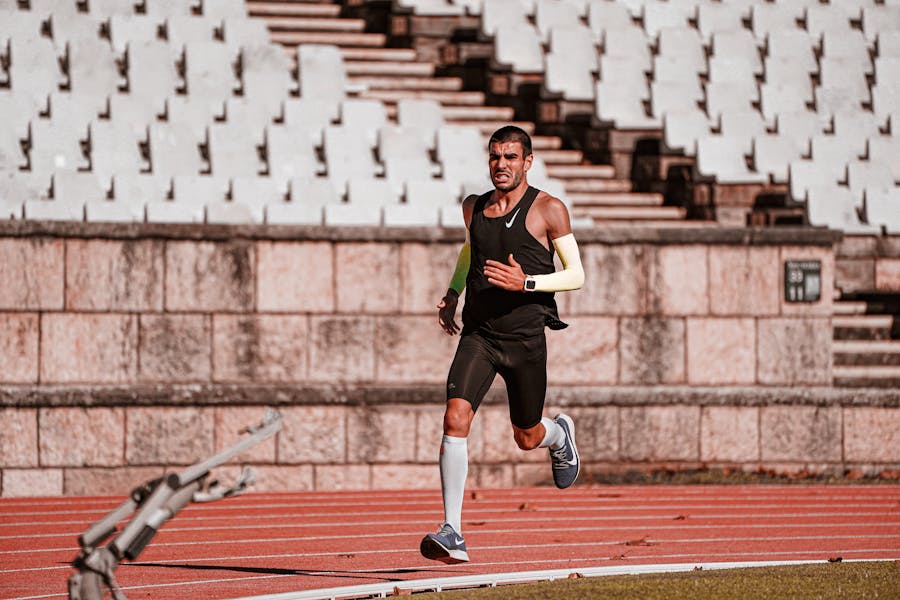
Your heart and lungs need to be ready for long days and quick changes. Cardio endurance is what keeps you going from one activity to the next without crashing.
Aerobic Exercise for Multi Sport Events
Train with activities that match your trip. If you’ll be kayaking and hiking, work both into your weekly routine. Shoot for 3-4 sessions a week, 30-45 minutes each.
Swimming’s awesome for building full-body endurance and it’s easy on your joints. Even if you won’t swim on your trip, it does wonders for lung capacity.
Cycling and running hit different muscle groups but boost your overall cardio. Try some long, steady sessions at a pace where you can talk—this is gold for your aerobic base.
Mixing up your workouts helps your body get used to switching sports. Plus, it keeps things interesting and helps avoid injuries.
Interval Training Methods
HIIT (High-Intensity Interval Training) is a game-changer for adventure prep. Alternate 30-60 seconds of all-out effort with 1-2 minutes of easy recovery. It’s a lot like what you’ll face out there—bursts of effort, then easier stretches.
The 4×4 method’s a favorite: warm up for 10 minutes, then do four 4-minute hard efforts with 3 minutes of recovery in between. This really boosts your VO2 max.
Hill repeats are my go-to. Find a steep hill, charge up for 30-60 seconds, then walk down. Repeat 6-10 times. You’ll build both power and endurance.
Start with just 1-2 interval sessions per week. Your body needs time to adjust and recover.
Improving Speed and Physical Exertion
To up your capacity for hard work, add weight to your training. A backpack with 5-10 pounds simulates your gear and builds specific strength.
Try “brick” workouts—go straight from one activity to another, like cycling for 30 minutes, then running for 15. This teaches your body to switch gears fast.
Once a week, add some speed work. Throw in short bursts of faster pace into your regular workouts, like 10 x 100m sprints with rest, or 5 x 400m at a challenging pace.
Every few weeks, do a long training day—maybe 30-100% longer than your usual sessions. It’s a great way to get your body and mind ready for those big adventure days.
Strength and Conditioning for Adventure Travel
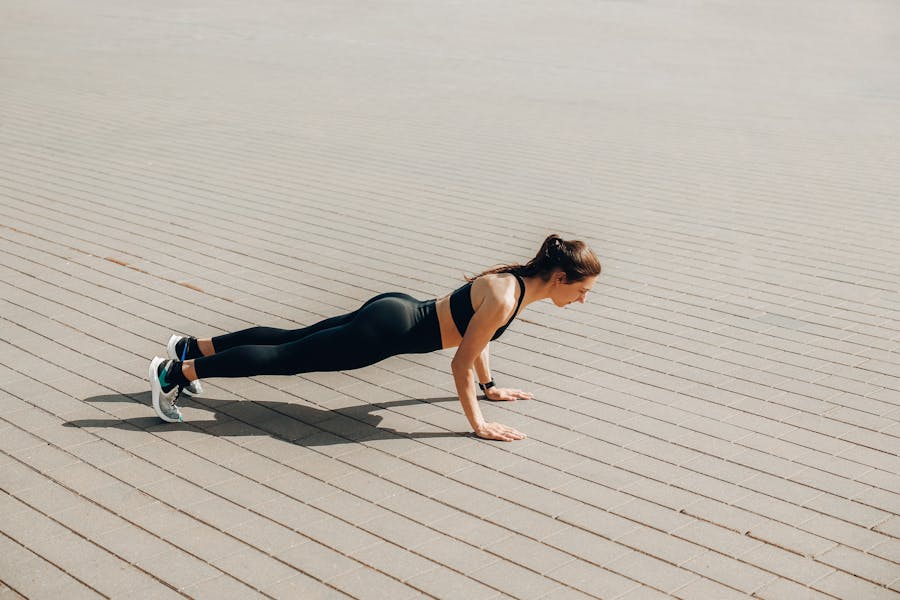
You’ll want strength training that actually helps with the stuff you’ll do on your trip. Build stability, power, and stamina for everything from steep hikes to paddling hard or scrambling up rocks.
Core Strength and Core Muscles
Your core is your adventure foundation. Strong abs and back muscles keep you balanced on rough ground and protect your spine when you’re lifting or twisting.
Start with planks—hold for 30 seconds and work up to 2 minutes. Add side planks to hit your obliques, which help with twisting movements like paddling.
Try hip rolls: lie on your back, knees bent, then lower your knees to one side while keeping your shoulders flat. Bring them back to center and repeat.
Mix in dynamic moves too! Mountain climbers and bicycle crunches prep your core for the ever-changing demands of outdoor travel.
Aim for 2-3 core sessions a week, focusing on doing each move well rather than cranking out endless reps.
Upper and Lower Body Training
Your legs do most of the work, but your arms and back need to be strong for paddling, climbing, and carrying gear.
For legs, focus on:
- Squats for overall strength
- Lunges to mimic hiking
- Step-ups for climbing
- Heel-down moves to toughen your calves for descents
For upper body, try:
- Push-ups for chest and triceps
- Pull-ups or rows for your back and biceps
- Shoulder presses for overhead strength
Add in some jump squats for explosive power—it’ll help when you need to scramble or hop rocks. Start with 2 sets of 10 and work up.
Alternate between upper and lower body days, and toss in a full-body session once a week for all-around conditioning.
Key Functional Exercises
Functional training gets your body ready for real-life movements. These exercises blend strength, balance, and coordination.
Try the squat curl overhead press: squat with weights, curl them up as you stand, then press overhead. It’s basically picking up gear and putting it away in one move.
A few more favorites:
- Weighted hiking (walk with a loaded backpack)
- Stair climbing with your pack
- Single-leg balance drills
- Side shuffles for lateral movement
Add resistance bands to make basic moves less predictable—outdoor conditions are rarely stable!
Start training at least 8-12 weeks before your trip, and slowly ramp up the intensity. Mix in cardio like swimming or cycling 2-3 times a week for endurance.
Sport-Specific Techniques and Preparation

Every adventure sport needs its own special prep. Training the right muscles and skills makes your trip more fun and helps you avoid injuries.
Running and Trail Running Preparation
Trail running isn’t anything like running on pavement. Hunt down local trails that look like the ones you’ll face on your trip. Start easy and gradually take on tougher routes.
Good trail shoes are a must—look for grip and ankle support. Don’t cut corners here; your ankles will thank you.
Practice running on uneven ground to build stability. Try single-leg balances (30 seconds per leg), lateral hops over a small object, and some downhill running to toughen your quads.
Work on going downhill: lean forward a bit, take shorter steps, and keep your knees slightly bent. Downhill can be even tougher than climbing!
Mix in interval work—1 minute hard, 2 minutes easy—on trails to build strength and speed.
Training for Hiking and Trekking
Great hiking comes down to leg strength, cardio fitness, and some mental grit. Load up your actual backpack with about 70% of your trip weight and hit the trails.
Go for 2-3 hikes a week, increasing distance and elevation bit by bit. No mountains nearby? Find stairs or stadium steps. Or try this treadmill routine:
- Set incline to 10-15%
- Walk for 30-45 minutes
- Wear your loaded pack
Strengthen your hiking muscles with step-ups, lunges with your pack, and wall sits (aim for 60 seconds).
Break in your hiking boots well before you go. Nothing ruins a trip faster than blisters. Wear them around the house, then on short walks, then longer hikes.
Practice with trekking poles if you’ll use them—they save your knees and help keep your balance when things get tricky.
Mountain Biking and Cycling Skills
Mountain biking takes endurance, technical skill, and, honestly, a bit of guts. If you’re just starting out, grab a beginner lesson—you’ll pick up proper form and some handy techniques right away.
Try out these basics at your local park:
- Shift your weight front to back
- Corner smoothly without skidding
- Ride over small obstacles
- Brake with control
Build up your endurance with rides that get longer each week. Start with 30-45 minutes, then tack on about 10% more distance each week. Mix in hills and flats so you’re ready for whatever the trail throws at you.
Get familiar with your gear before you head out. Make sure you can:
- Fix a flat tire quickly
- Adjust your seat height on the fly
- Shift through all your gears smoothly
- Handle basic maintenance
Practice riding with the same pack you’ll use on your trip. The added weight really changes your bike’s feel. Short, frequent rides on varied terrain will prep you better than endless flat miles.
Mastering Water and Climbing Skills
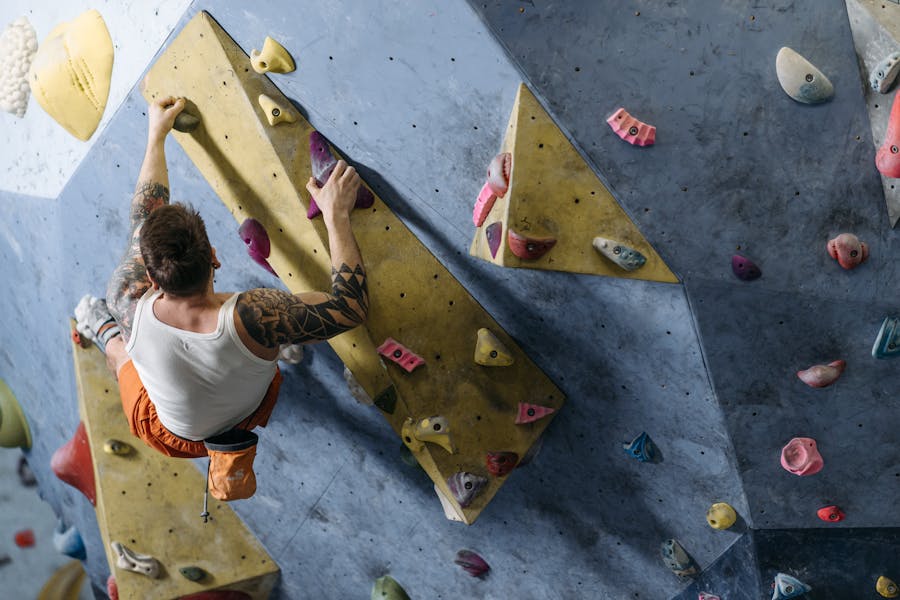
Tackling different terrain means you’ll need some very specific technical skills. Water and vertical challenges each come with their own learning curves, but investing the time pays off big for multi-sport adventures.
Kayaking and Paddling Fundamentals
Start by getting your paddle grip right. It feels weird at first—your hands should sit shoulder-width apart, knuckles lined up with the blade. I definitely learned this the hard way—my first river trip left me with a bunch of blisters.
Work on your forward stroke in calm water before you try any currents. Rotate your torso with each stroke, not just your arms. You’ll save a ton of energy on longer paddles.
Pick up the sweep stroke for turning and the draw stroke for moving sideways. These moves help you dodge obstacles and handle tricky currents.
Reading water is huge—watch for V-shaped ripples that point downstream (usually hiding rocks) and those smooth “pillows” of water that mean there’s something lurking underneath. Spotting these helps you pick safer lines.
Don’t skip safety! Practice wet exits and self-rescue in a controlled setting before you head for wilder rivers.
Developing Climbing Techniques
Start with footwork, not arm strength. Let your legs do most of the work. Small ledges and footholds might look useless, but they’ll hold you up if you trust them.
Practice these moves:
- Smearing: Use your shoe’s friction on the rock
- Edging: Stand on the inside or outside edge of your shoe
- Flagging: Stick a leg out for balance, not support
Build up finger strength slowly—hang boards or just hanging from door frames work well. This way you avoid those annoying injuries that keep you off the wall for weeks.
Learn rope basics even if you mostly boulder. Tying a figure-eight knot and using belay devices safely are non-negotiable once you start climbing higher.
Climbing’s just as much mental as physical, honestly. Problem-solving and keeping your nerves in check matter as much as muscle.
Navigation, Orienteering, and Teamwork
Multi-sport adventures aren’t just about fitness. You’ll need to navigate unknown ground, read maps, and work with others when things get tough.
Navigation Tools and Strategies
Getting lost can turn a great trip into a nightmare. Master the basics—a solid compass and a topo map are your best bet in the backcountry. Don’t trust GPS or your phone alone; batteries die and signals disappear at the worst times.
Learn how to read contour lines. They show elevation and help you picture the landscape before you see it in person. Match the map to what’s in front of you as you go.
Set mental checkpoints along your route. Spot unique landmarks—odd rocks, trail junctions, or creeks. “Ticking off” these keeps you on track.
Always plan your backup. Before each day, know:
- Where to bail out
- Where you could shelter
- Where to find water
- What hazards you might hit
Enhancing Orienteering Skills
You’ll get better at orienteering by practicing in real situations. Join a local orienteering club for weekend meets—they set up courses for all levels.
Look for permanent courses in nearby parks. These let you practice solo whenever you want. Use old race maps to make up your own challenges—pick features and navigate to them.
Try navigating in different conditions—rain, fog, even at night. Start somewhere familiar before you venture into totally new areas.
Keep a navigation journal. Write down what went wrong and what went right. Did you miss a landmark? Misread a contour line? Jot it down so you don’t repeat mistakes.
Effective Teamwork in Multi-Sport Events
Communication makes or breaks a team. Assign clear roles based on what each person does best—who’s the main navigator, who carries the first aid kit, who sets the pace?
Come up with simple hand signals or quick phrases for common situations. When you’re exhausted or spread out, you’ll be glad you did.
Practice making group decisions under stress. Some teams vote on route choices, others rotate leaders for each section.
Teams move at the slowest member’s pace. Figure out ways to help—maybe you carry their pack for a bit or slow down as needed.
Train together before your trip. You’ll get used to each other’s quirks, strengths, and weak spots. Nothing tests a friendship like being lost, tired, and hungry together.
Training for Balance and Stability
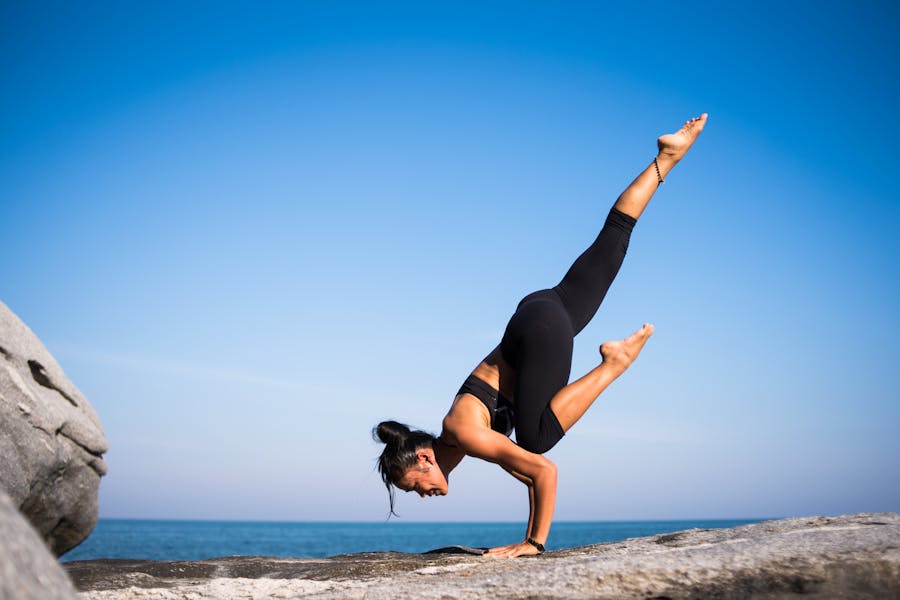
Balance and stability are key for any multi-sport adventure. These skills help you avoid injuries on rough ground and make you better at everything from hiking to kayaking to climbing.
Exercises to Improve Balance
One-legged stands are simple and effective. Stand on one foot while brushing your teeth or waiting in line. Hold for 30 seconds, then switch. Do it every day.
Yoga poses like Tree Pose and Warrior III hit your core and really test your balance. I found these super helpful before trekking in Nepal.
Use a BOSU ball to ramp things up. Try squats or lunges on the rounded side. It’s a lot like the wobbly surfaces you’ll face on trails or riverbanks.
Balance boards are awesome too. Start by just standing for 30 seconds, then try small moves or squats as you get steadier.
Incorporating Stability Work Into Routine
Tack stability training onto your regular workouts. After strength training, spend 5-10 minutes on balance work while your muscles are still warm.
Try these combos:
- Morning: 5 minutes of one-legged stands while making coffee
- Workout finisher: 3 sets of planks with shoulder taps
- Evening: 10 minutes of yoga balance poses
Sneak in practice during daily life. Walk heel-to-toe on a parking lot line while holding groceries. Stand on one foot at the bus stop.
Make it harder by closing your eyes or adding movement. This will prep you for real-life situations—like crossing a stream with a heavy pack.
Frequently Asked Questions
People ask a lot about training for multi-sport adventures. Here are answers to some of the most common questions about getting your body and mind ready for tough outdoor trips.
What’s the best way to prepare physically for a week-long hiking trip?
Start training 8-12 weeks before you go. Hike 2-3 times per week, slowly ramping up distance and elevation.
Work your lower body with squats, lunges, and step-ups. Don’t skip your core—add planks and mountain climbers.
Break in your hiking boots well before the trip. Blisters on day one are the worst.
Could you outline a comprehensive 12-week training program for adventure racing?
Weeks 1-4: Build your base with 3-4 cardio workouts (30-45 minutes each). Add 2 strength sessions with full-body moves. Throw in one “brick” workout—do two sports back-to-back.
Weeks 5-8: Stretch workouts to 60-75 minutes. Start interval training twice a week. Work on technique for your weaker sports. Practice switching between activities.
Weeks 9-12: Ramp up with race-specific workouts. Do at least two sessions that mimic race conditions. In the last week, taper down—shorter, lighter workouts.
Is there a tailored training plan for a 24-hour adventure race?
Month 1: Build endurance with 2-hour sessions three times a week. Rotate running, cycling, and paddling. Add a night session to get used to darkness.
Month 2-3: Go for 3-4 hour sessions on weekends. Practice navigation when you’re tired. Train with your real race gear and nutrition.
Final Month: Get in at least two 6-8 hour practice runs. Schedule an overnight session. Practice team work and problem-solving when you’re exhausted.
How should individuals over 50 approach training for demanding hiking trips?
Focus on staying consistent, not going all-out. Start with 3-4 moderate workouts a week and gradually go longer.
Give yourself more time to recover. Add active recovery days—gentle walks or swimming help a lot.
Strength training matters! Use resistance bands or light weights 2-3 times a week to keep muscle and joint stability. Balance work helps prevent falls.
What are effective cross-training techniques for multi-sport adventure travel?
Swimming is fantastic for cardio and gives your joints a break. It also works your upper body, which most adventure sports don’t.
Yoga boosts flexibility, balance, and strengthens those stabilizer muscles you usually ignore.
Functional training—think TRX, kettlebells, or bodyweight circuits—mimics real movements.
Combine strength and cardio for the best bang for your buck.
Can you suggest a 16-week training regimen for someone new to multi-sport adventure races?
Weeks 1-4: Start with 30-minute sessions, three times a week. Mix in walking or jogging, cycling, and swimming if your race calls for it.
Add two 20-minute strength workouts that focus on the basics. Keep things simple and just get moving.
Weeks 5-8: Bump up your cardio sessions to 45 minutes. Once a week, try a “brick” workout—bike and then run, back to back.
Stick with strength training twice a week. It might feel tough, but you’ll notice the difference.
Weeks 9-12: Push your cardio sessions to 60 minutes. Work on technical skills like paddling or navigation if your race includes them.
On weekends, go for a longer session—maybe two hours. This is where you start to feel like you’re actually training for something big.
Weeks 13-16: Shift your focus to race-specific training. Practice those transitions between activities; they can be surprisingly tricky.
Do a “mini race” simulation to see how things feel. During your last week, take it easy and let your body recover before the big day.
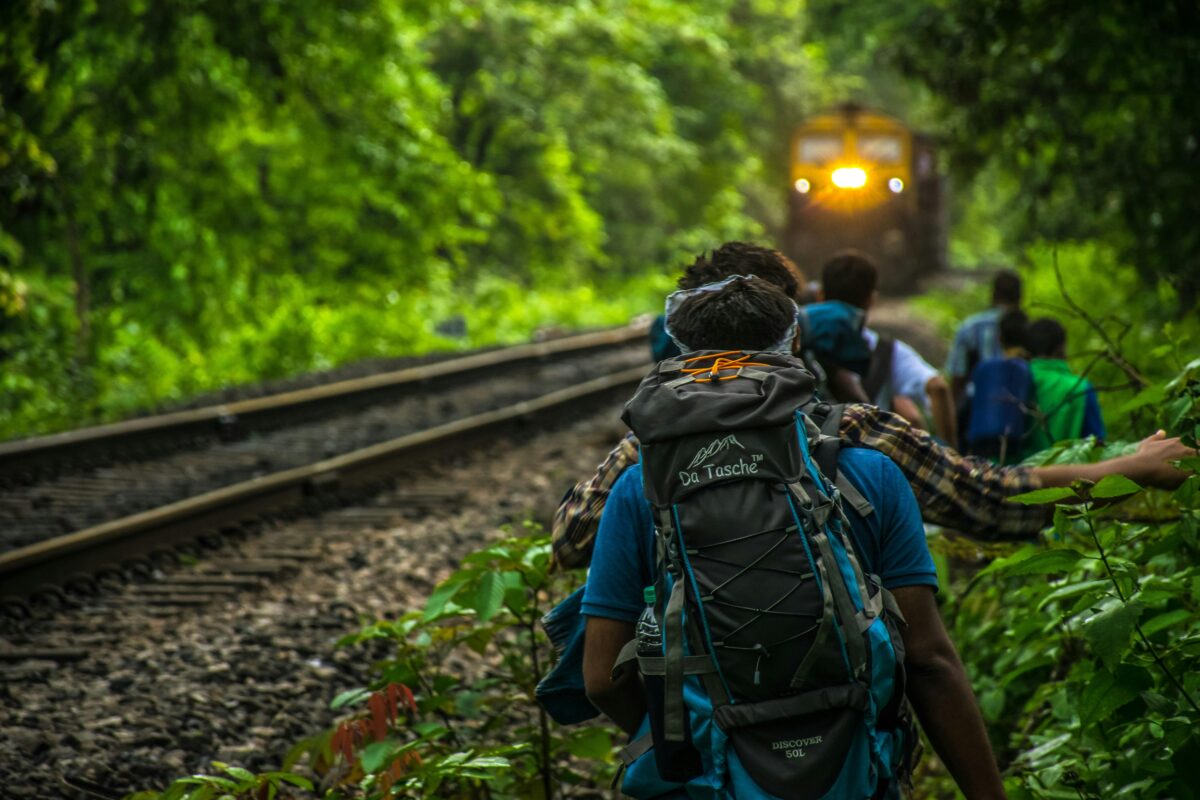
Leave a Reply